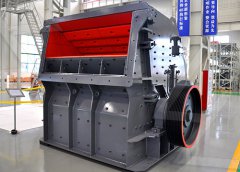
Range aggregate processing in spatial databases IEEE
This paper studies spatial indexes that solve such queries efficiently and proposes the aggregate Point-tree (aP-tree), which achieves logarithmic cost to the data set cardinality (independently of the query size) for two-dimensional data.This paper studies spatial indexes that solve such queries efficiently and proposes the aggregate Point-tree (aP-tree), which achieves logarithmic cost to the data set cardinality [PDF] Range aggregate processing in spatial databases
احصل على السعر
Range Aggregate Processing in Spatial Databases HKUST
A range aggregate query returns summarized information about the points falling in a hyper-rectangle (e.g., the total number of these points instead of their concrete ids). This paper A range aggregate query returns summarized information about the points falling in a hyper-rectangle (e.g., the total number of these points instead of their concrete ids). This paper Range Aggregate Processing in Spatial Databases IEEE
احصل على السعر
A Scalable Algorithm for Maximizing Range Sum in
We first review the range aggregate processing methods in spatial databases. The range aggregate (RA) query was proposed for the scenario where users This paper studies spatial indexes that solve such queries efficiently and proposes the aggregate Point-tree (aP-tree), which achieves logarithmic cost to the data set cardinality Range aggregate processing in spatial databases HKUST
احصل على السعر
Efficient Approximate Range Aggregation over Large-scale Spatial
Range aggregation is a primitive operation in spatial data applications and there is a growing demand to support such operations over a data federation, where the Predicted range aggregate (PRA) query is an important researching issue in spatio-temporal databases. Recent studies have developed two major classes of PRA query methods: (1) [PDF] Predicted Range Aggregate Processing in Spatio-temporal Databases
احصل على السعر
Approximate range query processing in spatial network databases
Spatial range query is one of the most common queries in spatial databases, where a user invokes a query to find all the surrounding interest objects. Most This paper studies spatial indexes that solve such queries efficiently and proposes the aggregate Point-tree (aP-tree), which achieves logarithmic cost to the data set cardinality Range Aggregate Processing in Spatial Databases
احصل على السعر
Query processing in spatial databases containing obstacles
This paper proposes efficient algorithms for the most important query types, namely, range search, nearest neighbours, e‐distance joins, closest pairs and distance semi‐joins, assuming that both data objects and obstacles are indexed by R‐trees. Despite the existence of obstacles in many database applications, traditional spatial This paper aims at efficient methods for very large spatial databases, motivated by: (1) the high and ever increasing availability of spatial data, and (2) the need for novel query types and improved services. Tao Y. and Papadias D. (2004). Range aggregate processing in spatial databases. TKDE 16(12): 1555–1570 Google Scholar Tree-based partition querying: a methodology for computing
احصل على السعر
Efficient Approximate Range Aggregation over Large
access the spatial objects in Psi via the query interface of data silo si. Definition 1 (FRA Query). Given a federation S possessing a collection of spatial objects P, a query range R and an aggregation function F, a federated range aggregation (FRA) query Q from the service provider aims to aggregate the measure attributes of the spatialin spatial databases. The range aggregate (RA) query was proposed for the scenario where users are interested in sum-marized information about objects in a given range rather than individual objects. Thus, a RA query returns an ag-gregation value over objects qualified for a given range. In order to efficiently process RA queries, usuallyA Scalable Algorithm for Maximizing Range Sum in
احصل على السعر
Approximately processing aggregate range queries on remote spatial
A revised version of regular polygon-based search algorithm RPSA is applied to approximately search aggregate range query results over remote spatial databases and results show that precision is over 0.97 with regard to sumrange query results and NOR is at most 4.3. Processing aggregate range queries on remote spatial databases suffers from Approximate range aggregate queries are one of the most frequent and useful kinds of queries for Decision Support Systems (DSS), as they are widely used in many data analysis tasks. Traditionally, sampling-based techniques have been proposed to tackle this problem. However, their effectiveness degrade when the underlying data Approximate range–sum query answering on data cubes
احصل على السعر
Range Aggregate Processing in Spatial Databases
A range aggregate query returns summarized information about the points falling in a hyper- rectangle (e.g., the total number of these points instead of their concrete ids). This paper studiesThis work proposes the first-of-its-kind approximate algorithms for efficient range aggregation over spatial data federation that devise novel single-silo sampling algorithms that process queries in parallel and design a level sampling based algorithm which reduces the time complexity of local queries at each data silo. Range aggregation [PDF] Efficient Approximate Range Aggregation Over Large-Scale Spatial
احصل على السعر
Efficient Maximum Range Search on Remote Spatial Databases
The latter [16] proposes two range query processing algorithms that use k-NN searches. However, our algorithm differs from theirs in that it deals with aggregate range queries by using k-NN searches, while theirs don’t deal with queries of this type. 3. Preliminaries Aggregate range queries are an extension of range queries [8], [9], [10].In this work, we propose the first-of-its-kind approximate algorithms for efficient range aggregation over spatial data federation. We devise novel single-silo sampling algorithms that processEfficient Approximate Range Aggregation Over Large-Scale Spatial
احصل على السعر
Range Aggregate Processing in Spatial Databases IEEE
A range aggregate query returns summarized information about the points falling in a hyper-rectangle (e.g., the total number of these points instead of their concrete ids). This paper studies spatial indexes that solve such queries efficiently andProcessing aggregate range queries on remote spatial databases suffers from accessing huge and/or large number of databases that operate autonomously and simple and/or restrictive web API interfaces. To overcome these difficulties, this paper applies aApproximately processing aggregate range queries on remote spatial
احصل على السعر
sbm/sbm range aggregate processing in spatial databases
Contribute to dihog/sbm development by creating an account on .Publications of Dimitris Papadias 2023 Moti, M. Simatis, P, Papadias D. Waffle: A Workload-Aware and Query-Sensitive Framework for Disk-Based Spatial Indexing.Proceedings of the International Conference on Very Large Databases (VLDB), Vancouver, Canada, August 28-September 1, 2023.. 2021 Tsaras, D. Trimponias, G, Publications of Dimitris Papadias HKUST
احصل على السعر
CRB-Tree: An Efficient Indexing Scheme for Range-Aggregate
Since processing large-scale spatial join aggregate (SJA) is usually difficult to be implemented on a single machine, parallel computing on cluster has been the key to process large-scale SJAIt is shown that, an aggregate window query can be answered in logarithmic worst-case time by an indexing structure called the aP-tree, and efficient cost models that predict the structure size and actual query cost are proposed. Aggregate window queries return summarized information about objects that fall inside a query [PDF] Aggregate Processing of Planar Points Semantic Scholar
احصل على السعر
Euler histogram tree: a spatial data structure for aggregate range
A tree-based data structure for counting vehicle trajectories by mapping them into a set of spatial histograms with different granularities is proposed and can be used for preserving the privacy of vehicle drivers by maintaining aggregated trajectory data. This work addresses the problem of aggregation of trajectories data. Specifically, we propose [Show full abstract] query processing performance in vague spatial data warehouses, focusing on range queries and vague regions. We also conduct an experimental evaluation using a real datasetIndexing for Range-aggregation Queries on Large
احصل على السعر
Efficient Computation of Temporal Aggregates with Range Predicates
The temporal aggregate in temporal databases is an extension of the conventional aggregate to include the time on the range condition of aggregation. It is a useful operation for Historical Datadistribution to help predict range query selectivity for spatial query optimization. Other studies compute embeddings for spatial objects (e.g., road segments [2] or trajectories [24]) to encode their spatial features for spatial query processing. In these studies, the ML mod-els are second-class citizens they help retrieve query results butMaaSDB: Spatial Databases in the Era of Large Language
احصل على السعر







